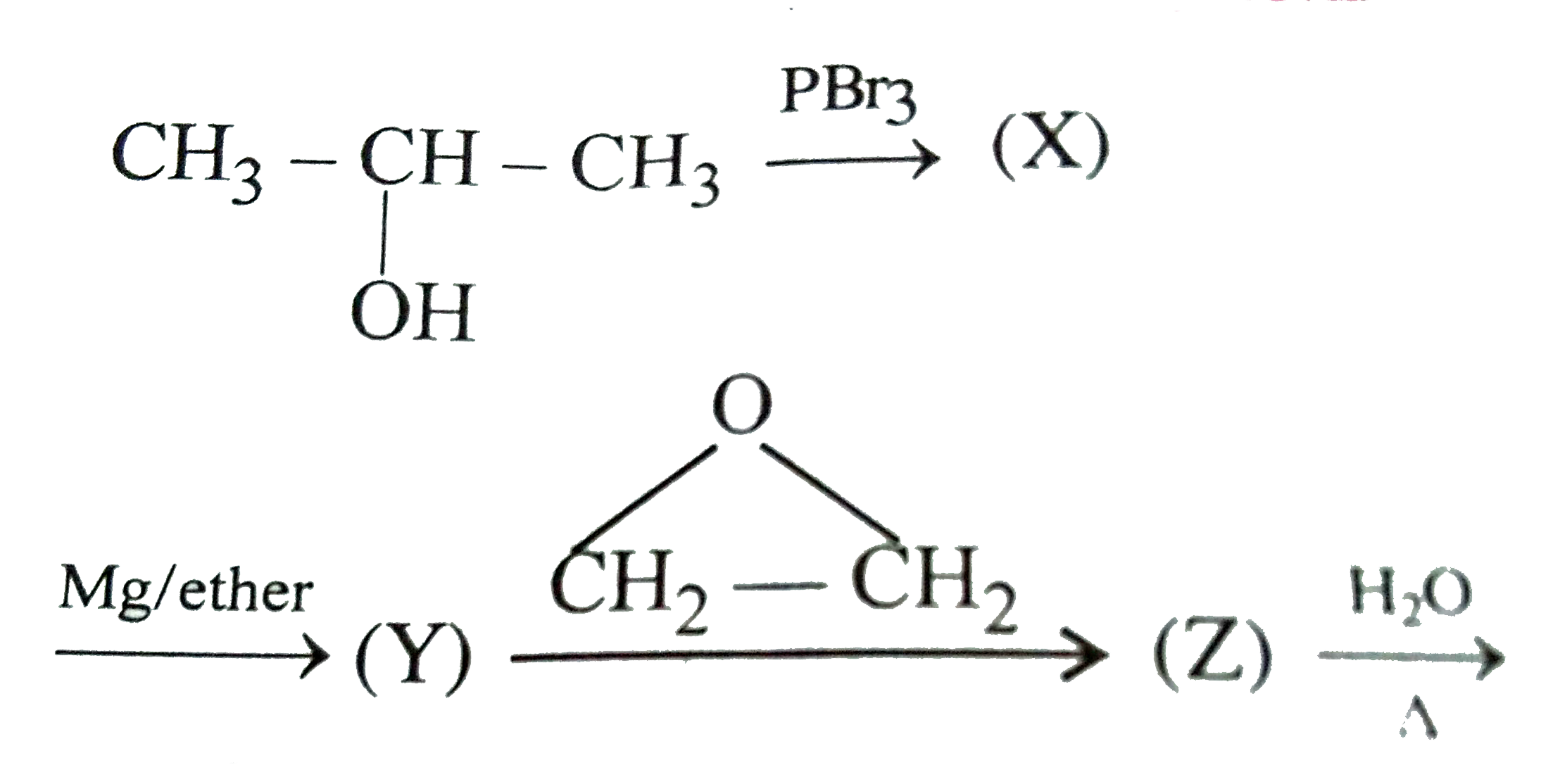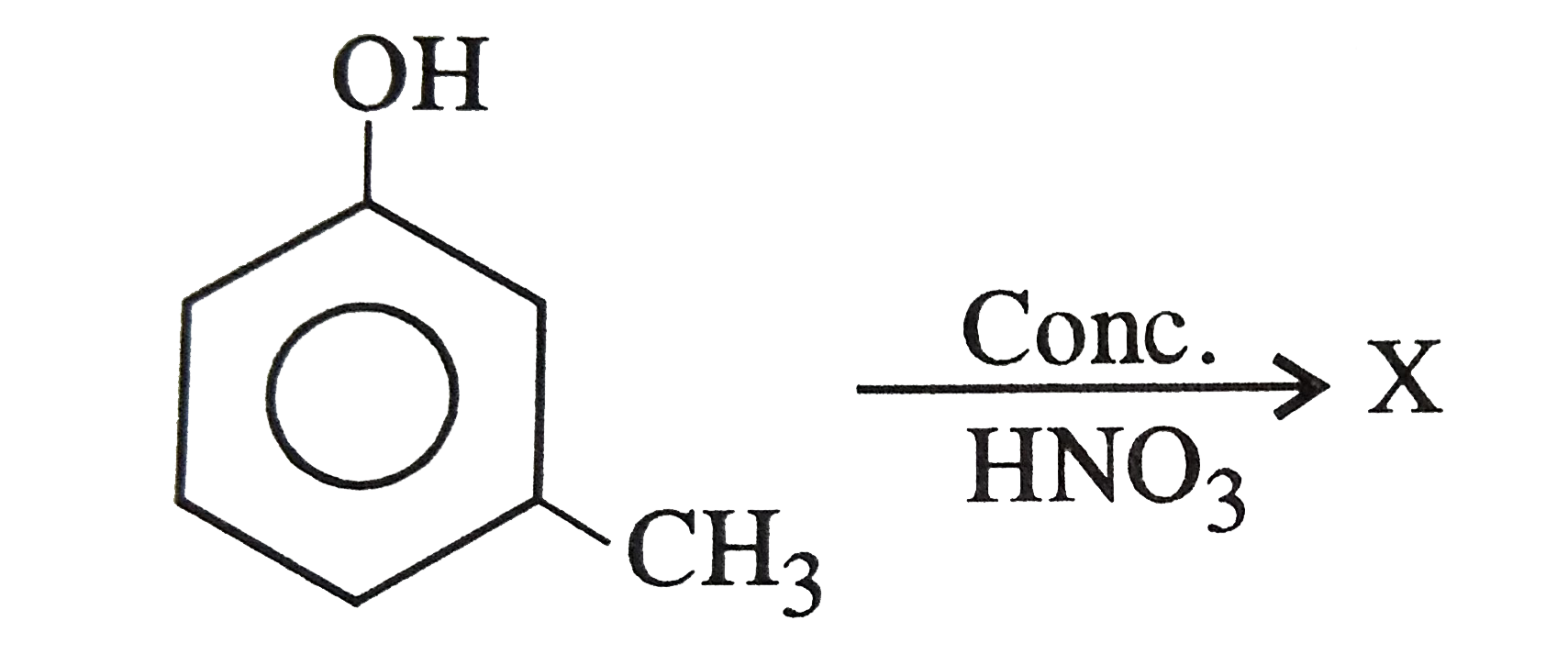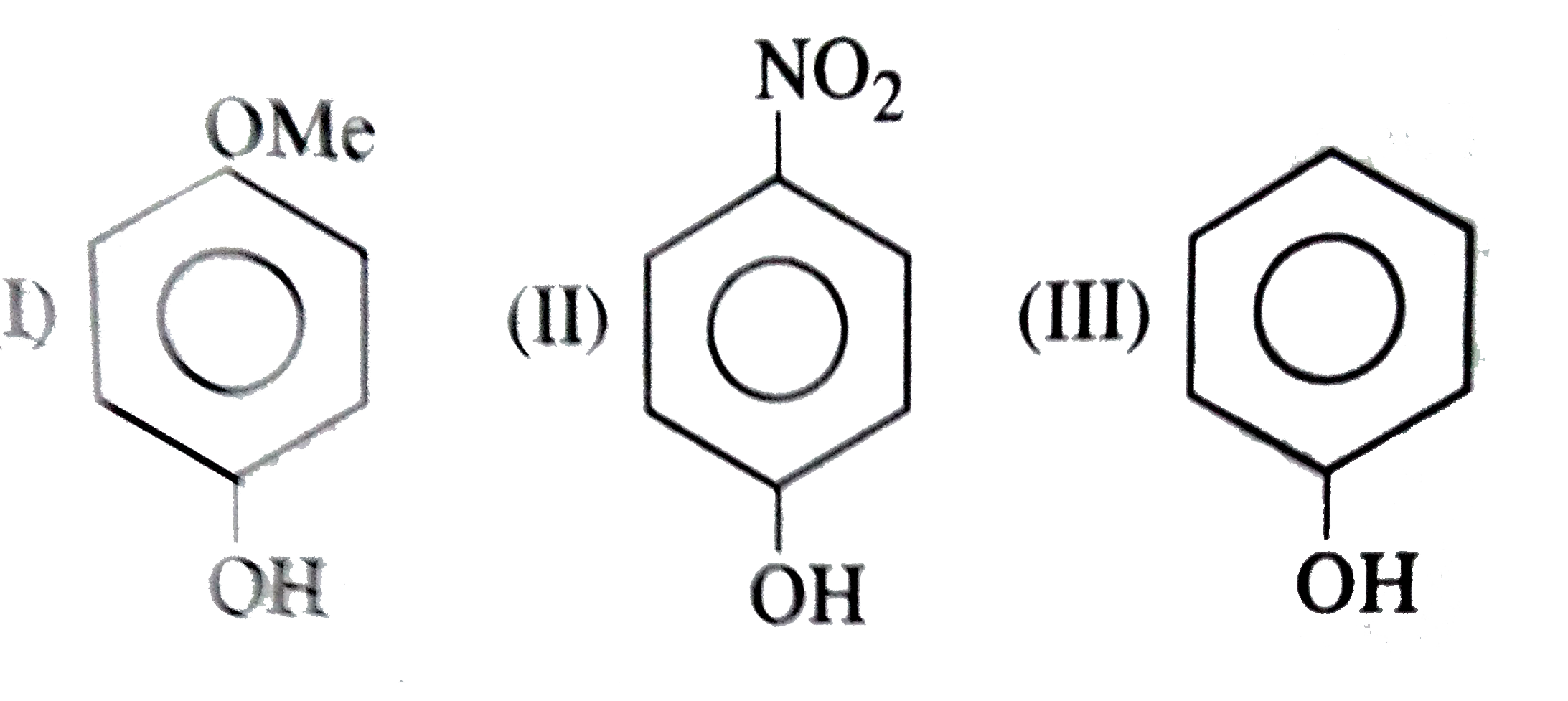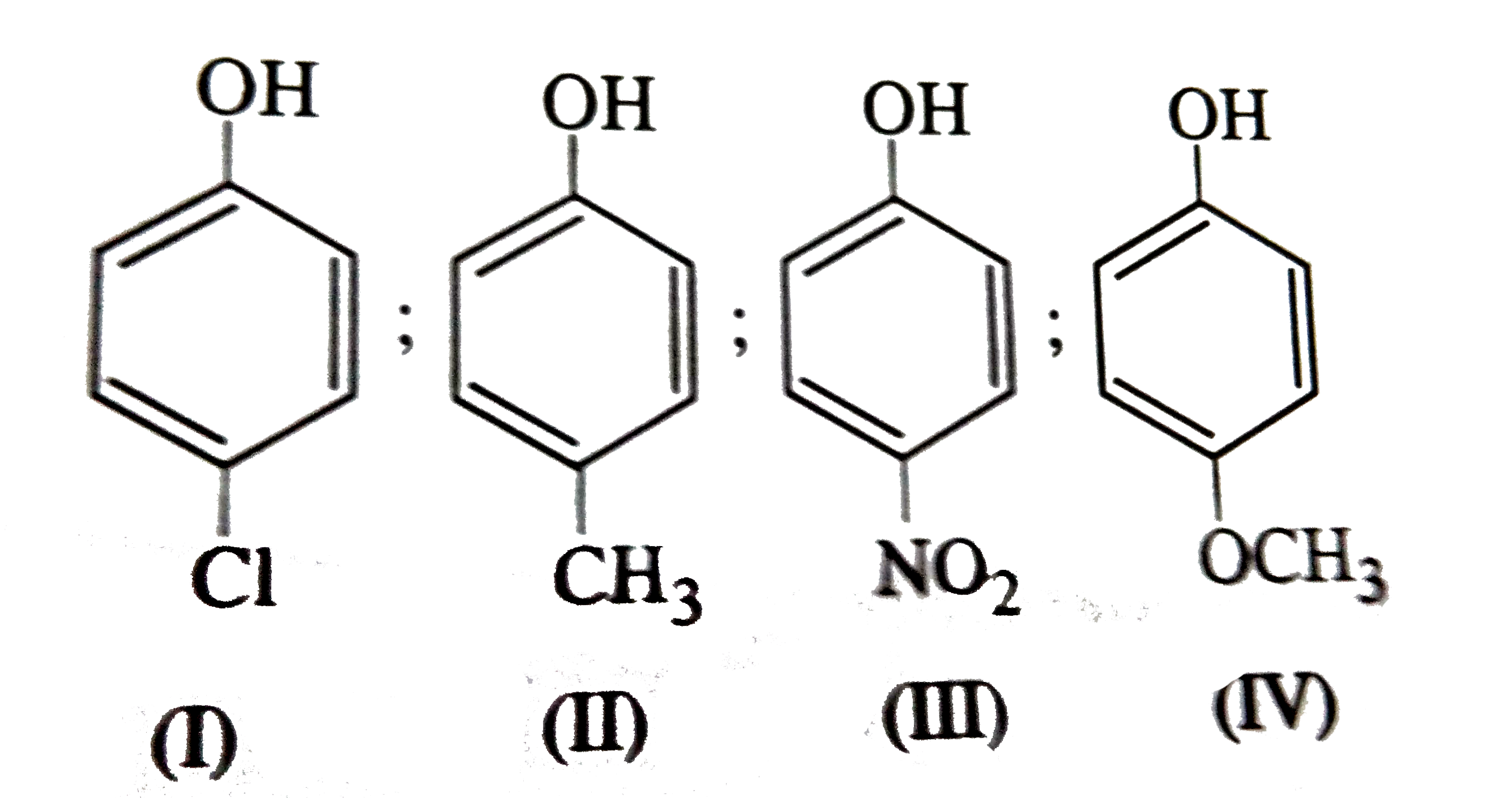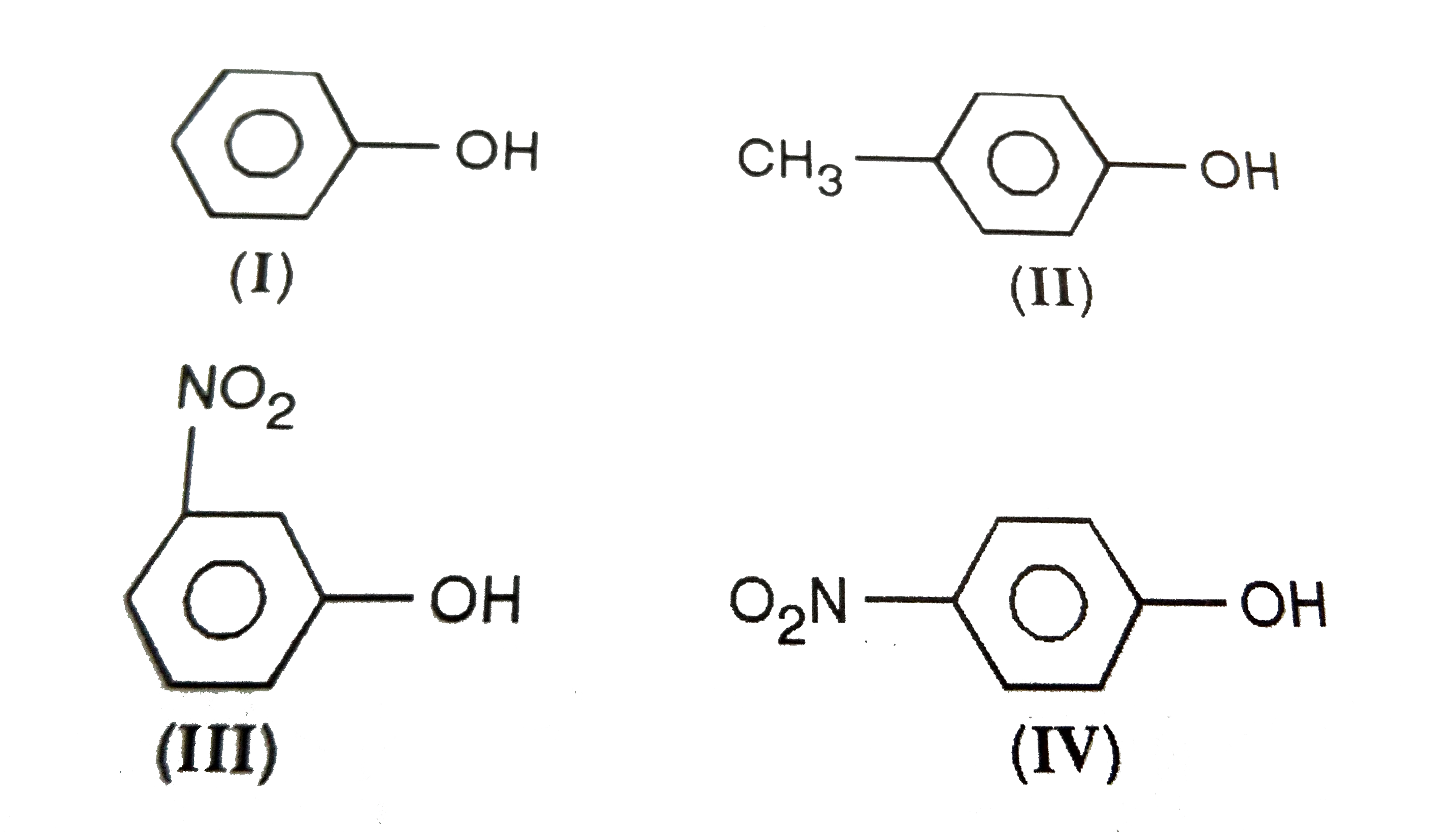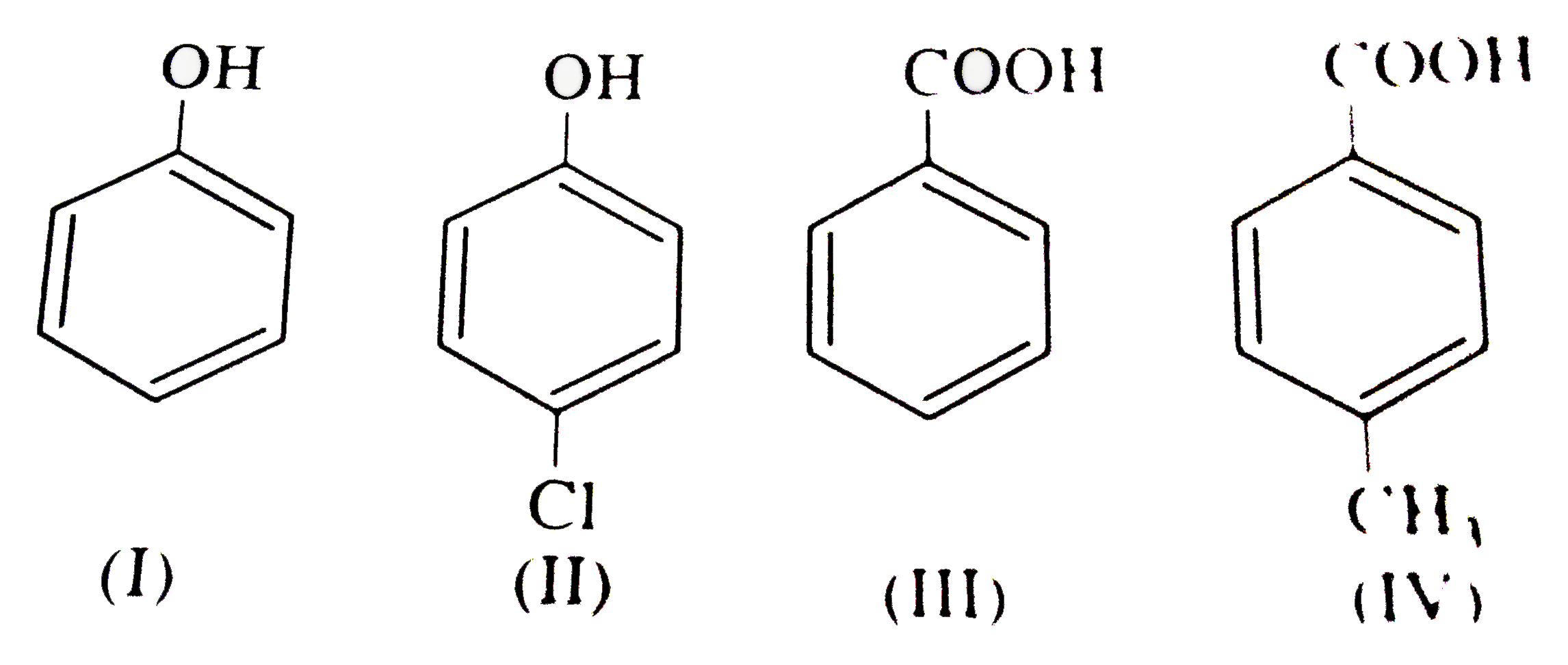Reason Assertion Type MCQs from S DINESH & CO CHEMISTRY (HINGLISH) Chapter 11:ALCOHOLS AND PHENOLS for Class 11
| Class 11 | CHEMISTRY |
| Chapter | ALCOHOLS AND PHENOLS |
| S DINESH & CO CHEMISTRY (HINGLISH) | Reason Assertion Type MCQs |
| Medium | English |
| Academic Year | 2023-2024 |
Question 121
A highly viscous compound (X) on reacting with conc. HNO3 gives an inorganic ester (Z) which on detonation gives CO2,N2,O2 as gaseous products. With KMnO4 it gives a compound (Y) of the molecular formula C2O4H2 which can also be obtained from glycol using same reagent. The compound (X) is View SolutionQuestion 522
Reimer Tiemann reaction introduces an aldehyde group, on to the ring of phenol, ortho to hydroxyl group. The reaction involves electro-philic aromatic substitution. This is a general method for synthesis of substituted salicyladehyde as depicted below

Which one of the following reagents is used in the above reactionsView SolutionQuestion 523
Reimer Tiemann reaction introduces an aldehyde group, on to the ring of phenol, ortho to hydroxyl group. The reaction involves electro-philic aromatic substitution. This is a general method for synthesis of substituted salicyladehyde as depicted below
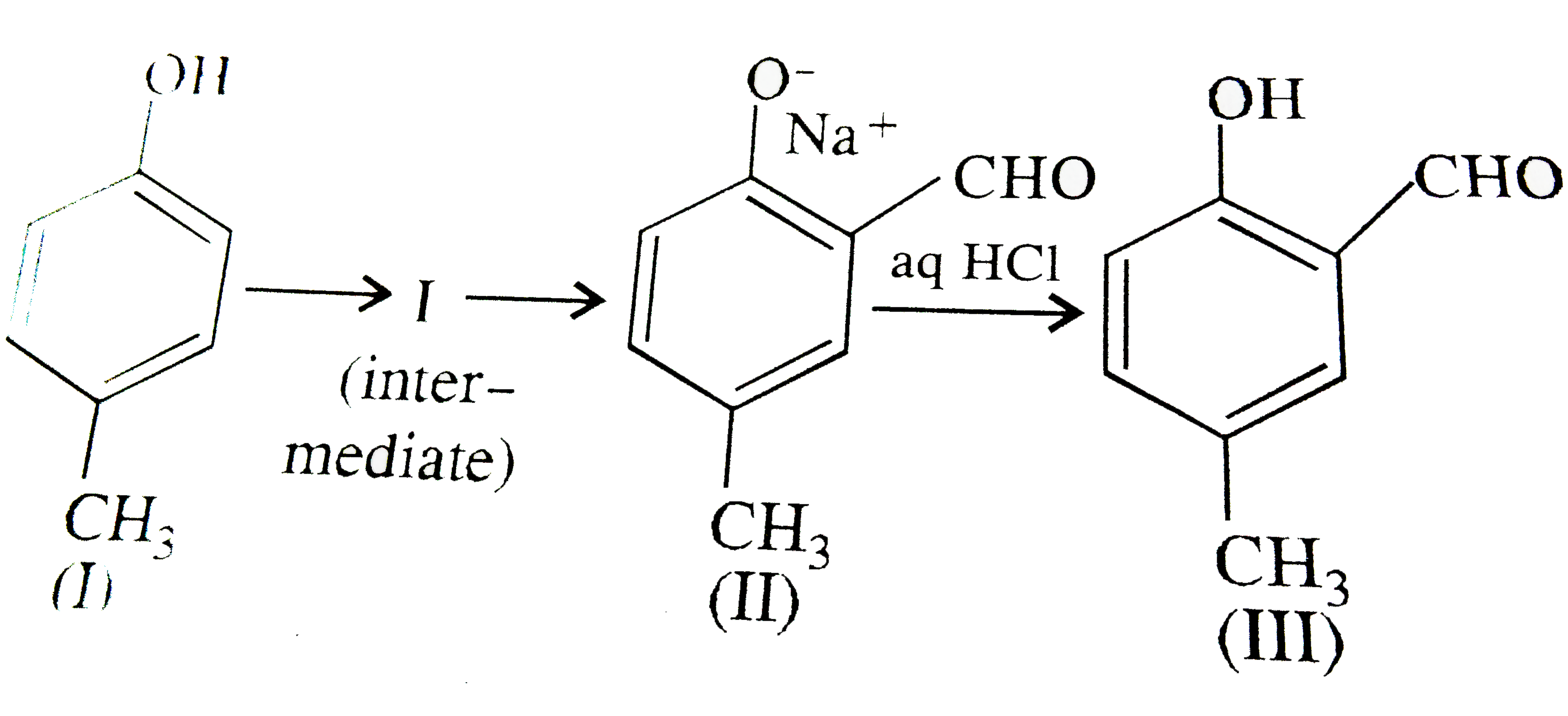
The electrophile in this reaction is View SolutionQuestion 524
Reimer Tiemann reaction introduces an aldehyde group, on to the ring of phenol, ortho to hydroxyl group. The reaction involves electro-philic aromatic substitution. This is a general method for synthesis of substituted salicyladehyde as depicted below
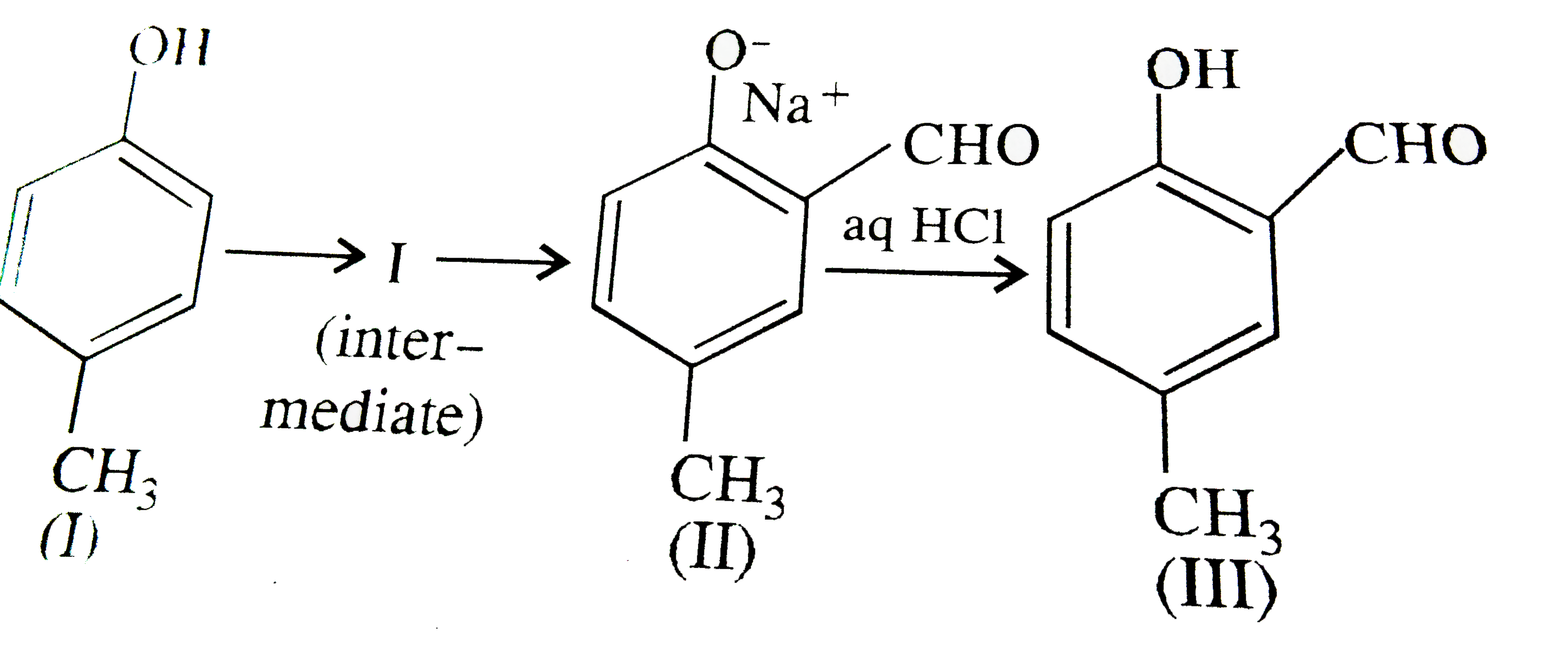
The structure of the intermediate is View SolutionQuestion 525
Both alcohols and phenols contain a hydroxyl group, but phenols are more acidic than alcohols. The reason being that the phenoxide ion left after the removal of a proton is resonance stabilized while alkoxide is not. Therefore, phenols dissolve in aqueous sodium hydroxide but alcohols do not. However, both are weaker acids than carbonic acid and hence do not decompose aqueous NaHCO3 solution evolving CO2. The presence of electron-donating groups in the benzene ring decrease the acid strength while the presence of electron withdrawing groups in the benzene ring increase the acid strength of phenols. The relative strength of o-, m- and p- substituted phenols, however, depends upon a combination of inductive and resonance effects of the substituent.
Alcohols are very weak acids even weaker than water. Because of the +I effect of the alkyl groups, tha acidic strength of alcohols decreases in the order : 1∘ alcohol >2∘ alcohol >3∘ alcohol.
The correct order of reactivity of 1∘,2∘ and 32 alcohols towards sodium metal is View SolutionQuestion 526
Both alcohols and phenols contain a hydroxyl group, but phenols are more acidic than alcohols. The reason being that the phenoxide ion left after the removal of a proton is resonance stabilized while alkoxide is not. Therefore, phenols dissolve in aqueous sodium hydroxide but alcohols do not. However, both are weaker acids than carbonic acid and hence do not decompose aqueous NaHCO3 solution evolving CO2. The presence of electron-donating groups in the benzene ring decrease the acid strength while the presence of electron withdrawing groups in the benzene ring increase the acid strength of phenols. The relative strength of o-, m- and p- substituted phenols, however, depends upon a combination of inductive and resonance effects of the substituent.
Alcohols are very weak acids even weaker than water. Because of the +I effect of the alkyl groups, tha acidic strength of alcohols decreases in the order : 1∘ alcohol >2∘ alcohol >3∘ alcohol.
Which of the following is the strongest acidView SolutionQuestion 527
Both alcohols and phenols contain a hydroxyl group, but phenols are more acidic than alcohols. The reason being that the phenoxide ion left after the removal of a proton is resonance stabilized while alkoxide is not. Therefore, phenols dissolve in aqueous sodium hydroxide but alcohols do not. However, both are weaker acids than carbonic acid and hence do not decompose aqueous NaHCO3 solution evolving CO2. The presence of electron-donating groups in the benzene ring decrease the acid strength while the presence of electron withdrawing groups in the benzene ring increase the acid strength of phenols. The relative strength of o-, m- and p- substituted phenols, however, depends upon a combination of inductive and resonance effects of the substituent.
Alcohols are very weak acids even weaker than water. Because of the +I effect of the alkyl groups, tha acidic strength of alcohols decreases in the order : 1∘ alcohol >2∘ alcohol >3∘ alcohol.
The acidic strength decreases in the orderView SolutionQuestion 528
Both alcohols and phenols contain a hydroxyl group, but phenols are more acidic than alcohols. The reason being that the phenoxide ion left after the removal of a proton is resonance stabilized while alkoxide is not. Therefore, phenols dissolve in aqueous sodium hydroxide but alcohols do not. However, both are weaker acids than carbonic acid and hence do not decompose aqueous NaHCO3 solution evolving CO2. The presence of electron-donating groups in the benzene ring decrease the acid strength while the presence of electron withdrawing groups in the benzene ring increase the acid strength of phenols. The relative strength of o-, m- and p- substituted phenols, however, depends upon a combination of inductive and resonance effects of the substituent.
Alcohols are very weak acids even weaker than water. Because of the +I effect of the alkyl groups, tha acidic strength of alcohols decreases in the order : 1∘ alcohol >2∘ alcohol >3∘ alcohol.
Which of the following is the strongest acidView SolutionQuestion 529
Both alcohols and phenols contain a hydroxyl group, but phenols are more acidic than alcohols. The reason being that the phenoxide ion left after the removal of a proton is resonance stabilized while alkoxide is not. Therefore, phenols dissolve in aqueous sodium hydroxide but alcohols do not. However, both are weaker acids than carbonic acid and hence do not decompose aqueous NaHCO3 solution evolving CO2. The presence of electron-donating groups in the benzene ring decrease the acid strength while the presence of electron withdrawing groups in the benzene ring increase the acid strength of phenols. The relative strength of o-, m- and p- substituted phenols, however, depends upon a combination of inductive and resonance effects of the substituent.
Alcohols are very weak acids even weaker than water. Because of the +I effect of the alkyl groups, tha acidic strength of alcohols decreases in the order : 1∘ alcohol >2∘ alcohol >3∘ alcohol.
The strongest acid among the following is View SolutionQuestion 530
Here each question statements given in two columns which have to be matched. Statements in column I are labelled as A, B, C and D whereas statements in column II are labelled as p, q, r and s. The answers to these question are to be appropriately bubbled as illustrated in the following example.
If the correct matches are A-p, A-s, B-q, B-r, C-p, C-q and D-p then the correctly labelled 4×4 matrix should look like as given below.

 View Solution
View SolutionQuestion 531
Here each question statements given in two columns which have to be matched. Statements in column I are labelled as A, B, C and D whereas statements in column II are labelled as p, q, r and s. The answers to these question are to be appropriately bubbled as illustrated in the following example.
If the correct matches are A-p, A-s, B-q, B-r, C-p, C-q and D-p then the correctly labelled 4×4 matrix should look like as given below.

 View Solution
View Solution
All Exercises from S DINESH & CO CHEMISTRY (HINGLISH) Class 11 CHEMISTRY ALCOHOLS AND PHENOLS
- LINKED COMPREHENSION TYPE MCQS
- MATRIX MATCH TYPE MCQS
- MCQ
- REASON ASSERTION TYPE MCQS
- RQ
- SELECTED STRAIGHT OBJECTIVE TYPE MCQS
- ULTIMATE PREPARATORY PACKAGE
- LINKED COMPREHENSION TYPE MCQS
- MATRIX MATCH TYPE MCQS
- MCQ
- REASON ASSERTION TYPE MCQS
- RQ
- SELECTED STRAIGHT OBJECTIVE TYPE MCQS
- ULTIMATE PREPARATORY PACKAGE
- LINKED COMPREHENSION TYPE MCQS
- MATRIX MATCH TYPE MCQS
- MCQ
- REASON ASSERTION TYPE MCQS
- RQ
- SELECTED STRAIGHT OBJECTIVE TYPE MCQS
- ULTIMATE PREPARATORY PACKAGE
- LINKED COMPREHENSION TYPE MCQS
- MATRIX MATCH TYPE MCQS
- MCQ
- REASON ASSERTION TYPE MCQS
- RQ
- SELECTED STRAIGHT OBJECTIVE TYPE MCQS
- ULTIMATE PREPARATORY PACKAGE

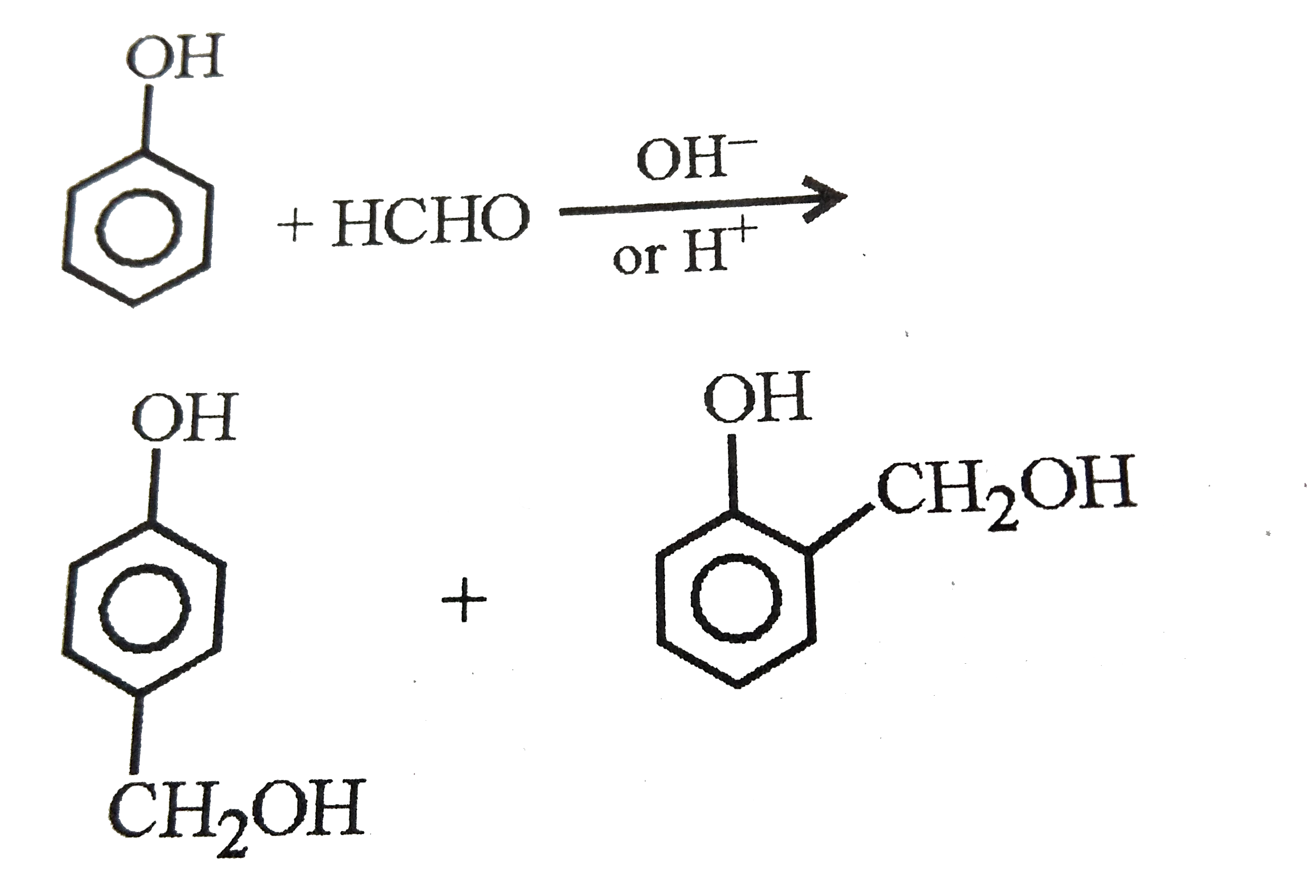


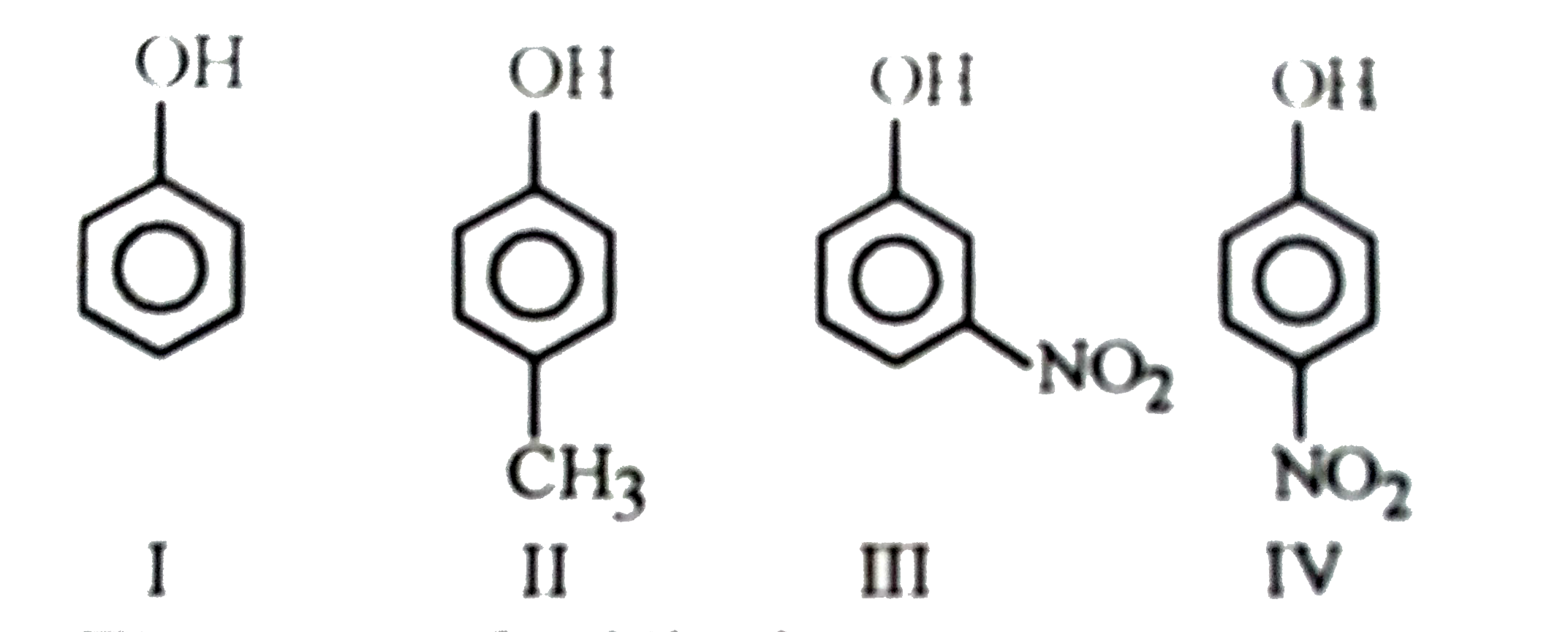


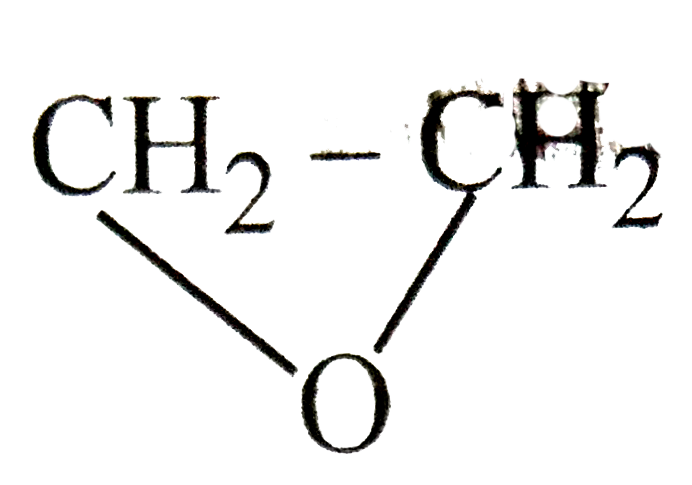 with RMgX followed by hydrolysis will lead to produce
with RMgX followed by hydrolysis will lead to produce
